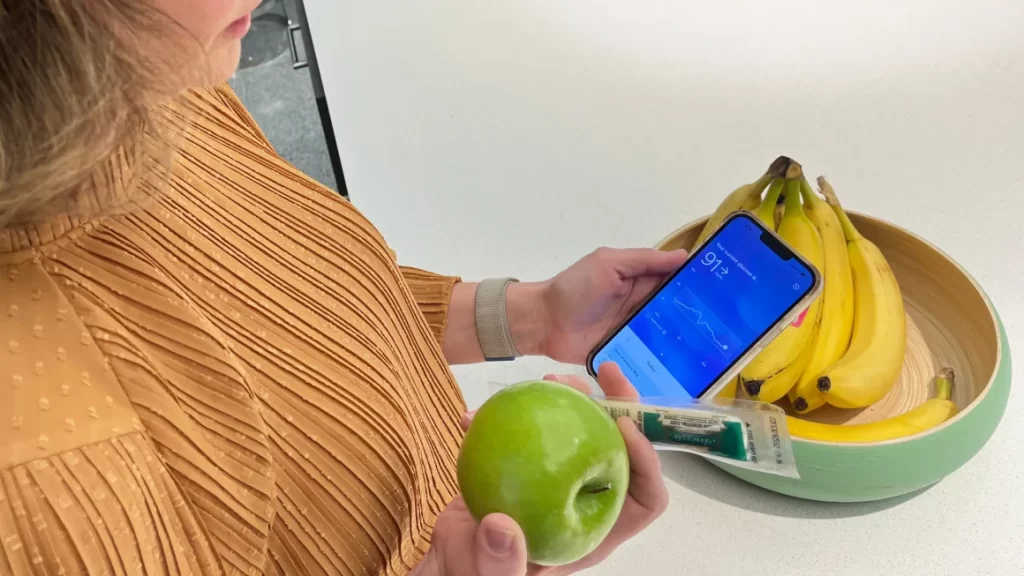In September, I found myself standing in front of my refrigerator, overwhelmed by hunger yet unsure of what to eat. The cause of my indecision wasn’t hunger alone; it was the fear that any choice would send my glucose levels skyrocketing, as tracked by the app on my phone. I had just begun using a continuous glucose monitor (CGM), a device designed to measure blood sugar in real-time, and I was determined to avoid any spikes.
Though CGMs are primarily used by people with diabetes, I wasn’t using one for medical reasons. Instead, I wanted to explore how this tool—now marketed as a wellness device for anyone—might offer insights into how my body reacts to different foods.
The process was eye-opening. For example, I quickly learned that cheese didn’t cause a spike in glucose, while seemingly healthy choices like a salad with quinoa and peanut dressing led to a rise. Interestingly, a slice of pizza and a glass of wine didn’t affect my glucose levels, a pleasant surprise, although not one I could use as an excuse to indulge. It was clear that the monitor was offering personalized data about my body’s unique responses to food.
As I continued wearing the CGM, I started adjusting my eating habits, mostly avoiding carbohydrates and focusing on protein and fats, which helped keep my glucose levels in check. Despite the initial weight loss of 3 pounds during the first week, I wasn’t trying to follow a strict low-carb or ketogenic diet. The experience brought a heightened sense of awareness, and soon, my anxiety over keeping glucose levels low started to fade.
While experts recommend that CGMs be used by people who require insulin to manage their diabetes, devices like Abbott’s Lingo and Dexcom’s Stelo are now available for consumers without diabetes. These devices are marketed to individuals interested in understanding how their daily habits—from food to sleep to stress—affect their glucose levels. With these insights, it’s hoped that people can adjust their behaviors to optimize health and wellness.
I had heard a lot about CGMs before starting my experiment. These devices have been revolutionary for those with type 1 diabetes, who rely on them to monitor blood sugar and adjust insulin levels. For these individuals, CGMs have replaced the need for frequent finger-stick tests, allowing them to track their glucose levels continuously and adjust treatment accordingly. Laura Marston, who has type 1 diabetes, shared how her A1C levels have improved since using a CGM, and she can now monitor her glucose every five minutes, a significant advantage over old methods.
But for those without diabetes, the benefits of using a CGM are still debated. Some experts, like Dr. Robert Lustig, believe the devices can be a valuable tool for monitoring blood sugar levels and preventing the onset of chronic diseases, particularly metabolic disorders. Others, however, argue that the data may not always be relevant for healthy individuals, cautioning against overanalyzing glucose levels and causing unnecessary anxiety.
I quickly learned that the experience of using a CGM could be both enlightening and anxiety-inducing. The app connected to the monitor would show real-time changes in my glucose, which often led to a strong urge to keep the numbers low. The first week was especially stressful as I tried to control my glucose response, often opting for foods I knew wouldn’t cause spikes. However, as time passed, I began to relax and realize that small fluctuations within the normal range were perfectly fine.
Interestingly, I found that the monitor’s data wasn’t just about controlling glucose—it encouraged me to rethink my eating habits. For example, I became more conscious of mindless snacking, which, while not always leading to dramatic glucose spikes, still contributed to my overall health.
After a few weeks, I decided to approach my experiment differently. I began using the CGM to track my usual eating habits without worrying too much about the data. I realized that the first part of my experiment had been influenced by my focus on keeping glucose low, rather than observing how my body truly reacted to different foods over time.
Ultimately, I found the CGM experience to be more than just about numbers—it was an opportunity to learn how different foods affect my energy levels and overall well-being. For now, I’m continuing to experiment with my diet, hoping to use the data to make better-informed choices about my health. But as experts like Dr. Nicole Spartano note, we are still in the early stages of research on CGMs in healthy individuals, so more data and insights are needed before any conclusions can be made.



